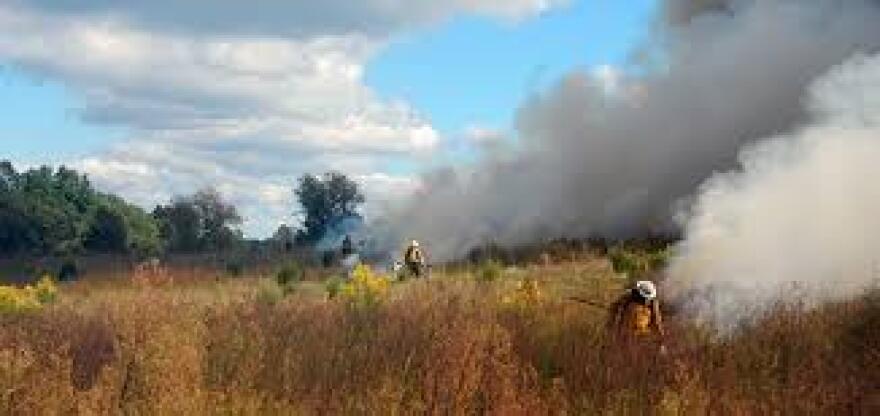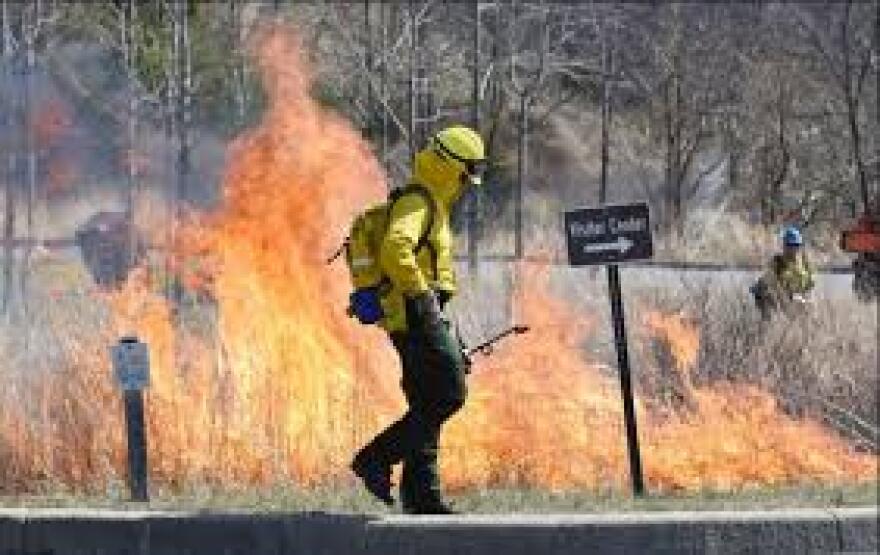More than 15 million acres in Virginia is covered with trees. That’s about 63% of our land, so forest managers are understandably nervous when they see pictures of wildfires in Australia or California.
The air is filled with the sound of birds. It is the sound of a healthy forest – acres of land that, ironically, burned just a year ago in rural Bath County. For centuries, fire set by lightning removed dead leaves and debris from the forest floor – making way for certain birds and animals that like living in new or open woodlands.
“That’s really crucial because we’re seeing incredible rates of species extinction," says Nature Conservancy scientist Laurel Schablein. "Perhaps the only hope that we have for those rare species is these large landscape-scale fires ."
But clearing land with fire is far more complicated today than it was a few hundred years ago.

"A lightning fire could have burned for months. There were no homes in danger," Schablein explains. "There were no roads that would have prevented fire from moving around."
Which is why the Nature Conservancy has joined with state and federal agencies to form the Fire Learning Network – a place to compare notes and talk strategy. Members met in Staunton and talked about drones – an important new tool.
"The drone technology is so amazing, because we can now fly drones with infrared cameras. We can see where things are burning," says the Nature Conservancy's Sam Lindblom. "It helps us manage safety, and it allows us to keep our aircraft use lower, so if we want to go and look at a place, we can fly a drone and look at it, and we don’t have the cost and the risk associated with a helicopter."
And they were excited to see a new planning and teaching device – a three-D computerized model of forested land, about five by four feet, that lights up with different colors depending on a variety of conditions like wind speed and direction, air temperature, topography and the locations where the fire is set. Jean Lorber demonstrated the simulation table.
“As Chris is lighting those ridge tops, you’re seeing on the sim table larger, deeper swaths of that darker color, indicating a higher fire severity.”
Lorber called it the toy of the year.

“You can burn the same piece of ground 1,000 times, 1,000 different ways. It’s a way to practice.”
Good, detailed information on the weather is also key to safe controlled burns, so the National Weather Service was also on hand to teach and offer consultations. Phil Manuel, a meteorologist based in Blacksburg, explained that finding out just how moist leaves and other debris on the forest floor are is critical.
“Because if you’re too wet, what happens? What you end up doing is generating smoke.”
And that could be more dangerous than fire according to Claiborne Woodall with the Virginia Department of Conservation and Recreation.
“The smoke can leave the site, reduce visibility on public roads and cause damage in terms of people’s personal health and things like that.”
The experts agree this region is at lower risk than Australia, California and other western states when it comes to wildfires. Again, Sam Lindblom.
“There is a lot more moisture on the eastern side of the country than there is in the west.”
Still, we’ve had our share of forest fires, and climate change is increasing the length of our so-called fire windows – times when blazes are most likely. That’s why, Lindblom says, those who hope to protect the forest with controlled burns are starting earlier and working longer.
“We would burn this week if the sun started shining and the winds were correct. The fire season for controlled burning runs the middle of February, when the days get long enough, through the month of May, and sometimes we do some summer burning.”
They share scarce resources and knowledge.
“We’re trying to restore a landscape, and landscapes shouldn’t have boundaries, so we need to work together across public and private lands. We work together, we train together,” says Lindsey Curtin with the National Forest Service.
Justin Barnes with the Virginia Department of Forestry agrees.
“To burn together across jurisdictional boundaries is huge,” he says. “We have a lot of work to do, but this is one of the main ways to get that capacity and that network is by working together on these types of projects.”
And District Ranger Lauren Stull adds, “Your network gets larger. You know who to call. The science and the research that’s shared is cutting edge. The fact that they can share their knowledge and learn from each other is just going to make us all stronger.”
You can find more information here.


